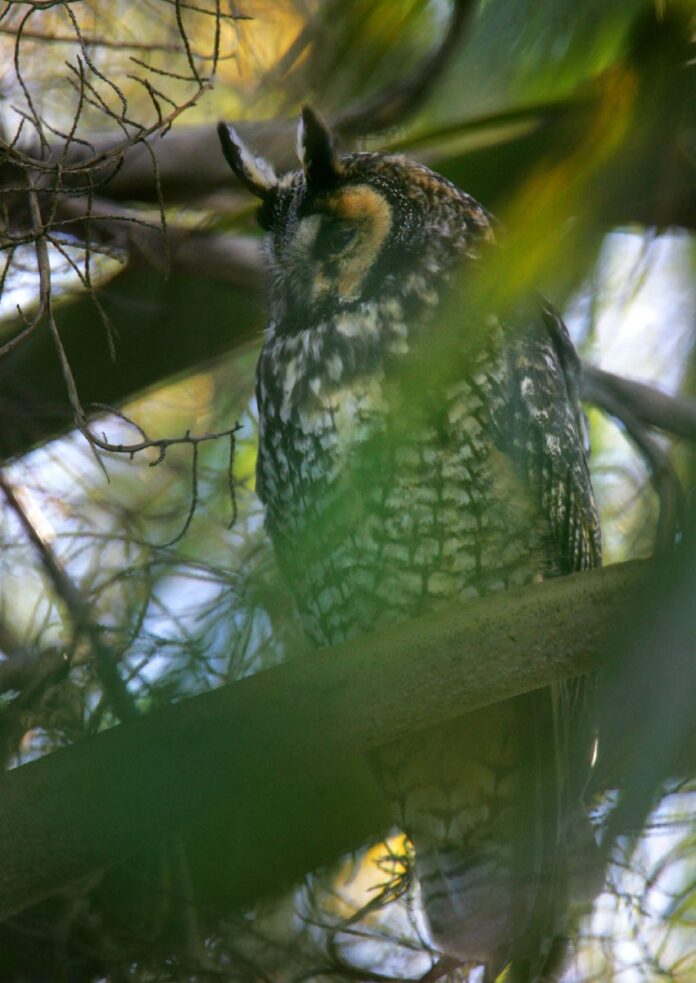EDINBURG — During Monday afternoon’s sunny conditions, a rare visitor, the long-eared owl, was found resting on the limb of a sabal palm at the Edinburg Scenic Wetlands and World Birding Center.
A local family on a birding trip last Thursday spotted the owl and their curiosity led them to contact birders and photographers who were able to confirm the species by its long, rounded wings and long tail with vertical streaks.
The owl wasn’t seen again until Saturday, after the staff led a search party for the rare visitor.
Over the course of 10 years, the species has been spotted in the region only six times — the last being November 2016. These other sightings, however, lasted just a day.
Monica Oliva, manager of the birding center, referred to the owl’s presence as a “freak visit” and has attracted first-time visitors as well as those who haven’t been there in years.
Now, the center has attracted more than 150 visitors since confirming the owl’s sighting. In fact, local birders, staff from other local nature centers and families — some of whom have driven as far as Houston — have visited recently to catch a glimpse of the owl.
Connie and Tom Unsicker are winter visitors from Santa Cruz, California who volunteer at Texas State parks through the season.
Upon hearing news of the sighting, the Unsickers grabbed their birding gear and made it to the wetlands.
They described the Rio Grande Valley to have a reputation as a hotspot, with an excellent “meeting grounds,” for rare birds.
In fact, the green-breasted mango hummingbird was spotted at Quinta Mazatlan just last month.
The long-eared owl can be found year-round in California, but its rare sighting in Edinburg excited the couple.
The same excitement rings true for Al Leach, a visitor from Canada who recalls first seeing a long-eared owl a block from his home last summer.
Oliva reasoned the bird has had such an extended stay due to the park’s controlled conditions — having a portion of the owl’s temporary habitat within fenced confines with yellow tape.
“If we spook it, it’ll never come back here, so that’s why we want the bird to be as undisturbed as possible,” Oliva said.
According to Oliva, the nocturnal bird has moved around the park, but not too great of a distance away. It’s able to roam the park grounds freely at night and forage.
“This is not something that we’re artificially feeding,” she said.
From a respectable distance, the owl has been determined to be an adult but the sex remains unknown.
Oliva doesn’t predict the owl will stay long and encourages anyone interested to get to the park as soon as possible.
The park hours are 7 a.m. to 5 p.m. Mondays and 7 a.m. to 6 p.m. Tuesday through Saturday; the park is closed on Sundays.




